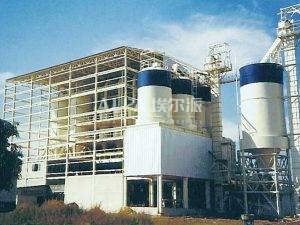Lime is the main slag-forming agent in converter steelmaking, which is made of limestone fired under certain conditions. Limestone (CaCO3) is not only a provider of lime (CaO), but also a direct carrier of CO2 gas, and its application value in the field of steelmaking is self-evident.
In recent years, in order to reduce the cost of converter steelmaking, reduce the impact of active lime supply interruption on production, and achieve carbon dioxide emission reduction and other purposes, major steel mills such as Anshan Iron and Steel, Handan Iron and Steel, Baosteel Zhanjiang and other major steel mills have tested the limestone slagging process. According to the research results, the effect of limestone partially replacing lime in steelmaking and the economic value of energy saving and emission reduction are very worthy of recognition.

01
Limestone Steelmaking Process
The limestone steelmaking process is upgraded from the limestone slag steelmaking process. Limestone steelmaking process refers to the process of directly putting limestone into the converter for concentrated reaction, using the decomposition of calcium carbonate on the surface of the limestone to absorb the temperature in the converter and cooling the inside and outside of the converter to assist the steelmaking production. According to Ji Dejing’s research, replacing part of lime with limestone can meet the requirements of dephosphorization, reduce oxygen consumption, increase the recovery of gas per ton of steel, and shorten the smelting cycle.
02
Application of Limestone in Steelmaking Process
In the steelmaking process, it is necessary to accelerate the reaction of slag steel by stirring, and also improve the problem of inclusion floating. Limestone is used instead of lime as the solvent to make steel, and the carbon dioxide gas generated by the strong chemical reaction of the calcium carbonate on the surface of the limestone during the decomposition process can form a gas stirring effect. Moreover, carbon dioxide replaces the expensive argon gas to stir molten iron, which directly reduces the cost of steelmaking. In addition, the density of CaCO3 is larger than that of CaO, and the CaCO3 particles are easy to penetrate into the molten steel during the injection process to molten steel, and the mixing is more uniform.
03
Epilogue
The application value of limestone steelmaking is mainly reflected in three aspects: saving raw materials and reducing waste residue, enhancing the effect of slag making, energy saving and environmental protection. In terms of raw materials, the application of limestone to steelmaking reduces the use of active lime and iron ore in the converter steelmaking process. From the slag making effect, adding a certain amount of iron ore to cool down, under the action of limestone cooling, the viscosity of the final slag is effectively guaranteed, and the comprehensive slag making effect is better. Environmental protection value, the application of limestone in steelmaking realizes the dual value of maximizing resource utilization and energy saving and emission reduction, which is reflected in the cooling of limestone converter and the recycling of carbon dioxide.
